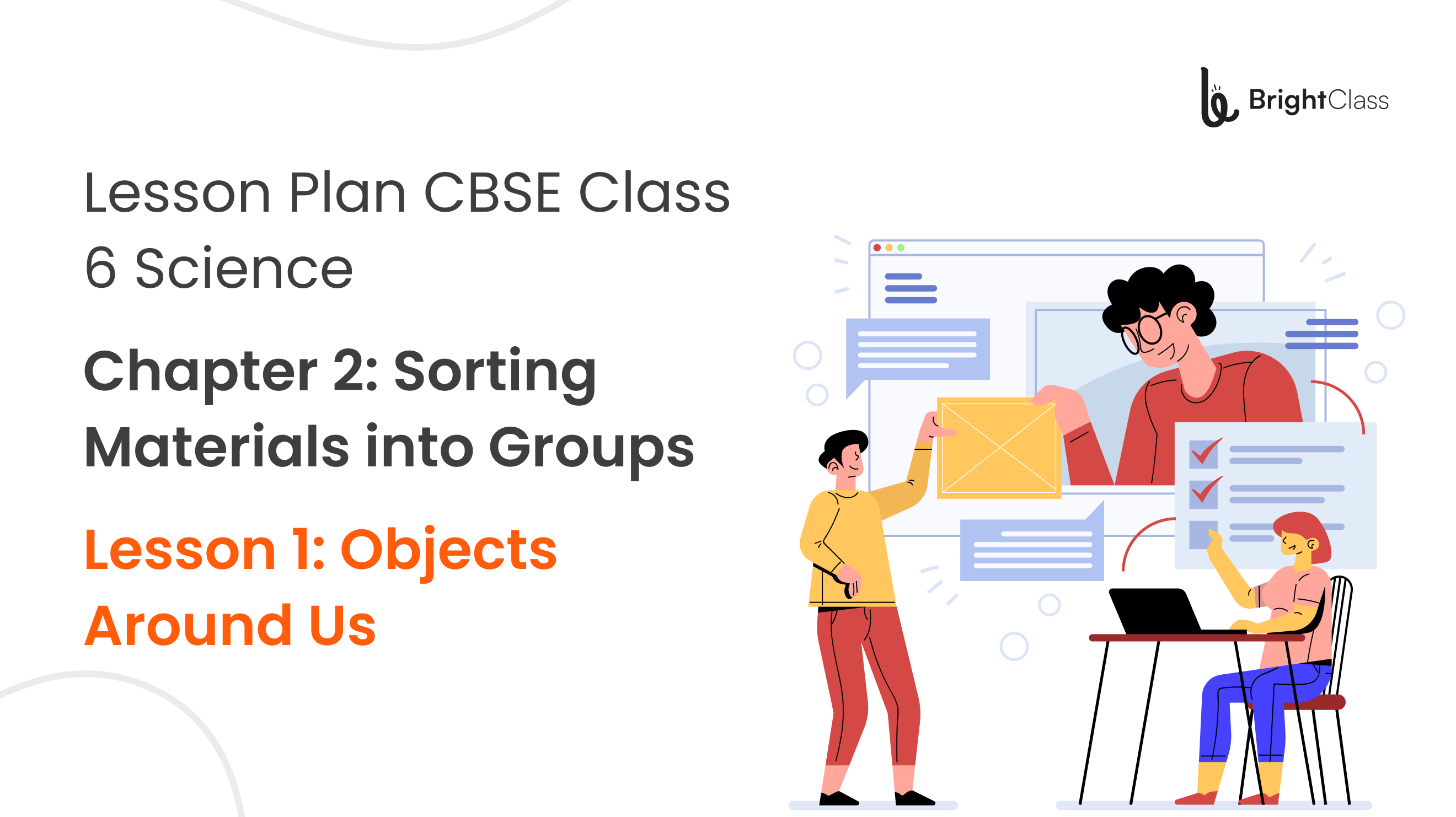
Lesson Plan for CBSE Class 6 Science || Chapter 2: Sorting Materials into Groups || Lesson 1: Objects Around Us ||
Chapter Sorting materials into groups and lesson objects around us is crucial for Class 6 students as it forms the foundation of scientific understanding. This lesson introduces students to the concept of classification, helping them develop critical thinking and observational skills. By sorting materials into groups, students learn to identify patterns and relationships, fostering a systematic approach to learning about the world.
For teachers, having a well-structured lesson plan is essential for effective classroom instruction. It allows teachers to set clear learning objectives, choose appropriate teaching methods, and provide engaging activities that cater to diverse learning styles. A well-thought-out lesson plan for this chapter ensures that students grasp the fundamental principles of sorting materials into groups, making it easier for them to comprehend more complex scientific concepts in the future. It also provides a roadmap for teachers to assess student understanding and adjust their teaching strategies, accordingly, promoting a successful and enriching learning experience.
Lessons in Chapter 2:
Sorting Materials into Groups
- Objects Around Us
- Properties of materials
Here is the Lesson Plan for Objects Around Us under the chapter Sorting Materials into Groups
This lesson plan is according to the popular 5E’s Framework using the BrightClass application. Try it now for free.
By engaging students with intriguing materials, fostering hands-on
exploration, providing clear explanations of scientific concepts,
encouraging application in new contexts, and incorporating
assessments for evaluation, the 5E's framework ensures a
comprehensive learning experience. Students actively participate in
sorting tasks, collaborate with peers, and reflect on their
findings, leading to a deeper understanding of material properties.
For teachers, this structured approach facilitates effective lesson
planning, promotes student engagement, and offers valuable insights
into individual and collective comprehension. The 5E's framework not
only aligns with the developmental stage of students but also enhances
critical thinking and problem-solving skills, laying a solid foundation
for future scientific exploration.
Engage
OBJECTIVES: The students will be able to:
- Identify different objects around them
- Understand the components of the objects
HOOK:
Show the students various objects, such as a pencil, a book, and a toy. Ask them to identify the objects and describe what they are made of.
PREVIEW:
Today, we will be learning about the different components of the objects around us and how they are made.
Explore
OBJECTIVES: The students will be able to:
- Observe and explore different objects
- Identify the different components of the objects
MATERIALS:
Various objects (e.g., pencil, book, toy), paper, pencils
PROCEDURE:
- Divide the students into small groups.
- Give each group a different object (e.g., pencil, book, toy).
- In their groups, ask the students to carefully observe the object and identify its different components (e.g., wood, lead, an eraser for a pencil).
- Have each group share their findings with the class.
- Write the components on the board and discuss their functions.
CLOSURE:
Discuss with the students the importance of understanding the components of objects and how they contribute to the object'sfunction.
Explain
OBJECTIVES: The students will be able to:
Understand the different components of objects and their functions Describe how objects are made
MATERIALS:
Visual aids (e.g., diagrams, pictures) showing the components of different objects
PROCEDURE:
- Show the students the visual aids of different objects (e.g., a car, a computer, a chair) and explain the components of each object.
- Discuss the function of each component and how they contribute to the object's overall function.
- Describe to the students how putting various parts together creates objects.
- Use examples to illustrate the process of making objects (e.g., how a car is made by assembling the engine, chassis, and body).
CLOSURE:
Reinforce the importance of understanding the components of objects and how they are made.
Elaborate
OBJECTIVES: The students will be able to:
- Apply their knowledge of object components to real-life examples
- Discuss the importance of different components in different objects
MATERIALS:
Real objects or pictures depicting various objects (e.g., a bicycle, a clock, a television)
PROCEDURE:
- Show the students real objects or pictures depicting various objects.
- In small groups, ask the students to identify and describe the components of each object.
- Have each group present their findings to the class, discussing the importance of different components in different objects.
- Facilitate a class discussion on the similarities and differences in the components of the different objects.
CLOSURE:
Summarise the key points of the lesson and highlight the importance of understanding the components of objects in our daily lives.
Evaluation
OBJECTIVES ACHIEVED: The students have achieved the objectives of:
- Identifying and describing the different components of objects
- Understanding how objects are made
HOMEWORK_ASSIGNMENT:
For homework, ask the students to observe and identify the components of three different objects in their homes (e.g., a lamp, a chair, and a television). They should write down the components and their functions.
ADDITIONAL_COMMENTS:
Encourage the students to apply their knowledge of object components to everyday objects around them.

